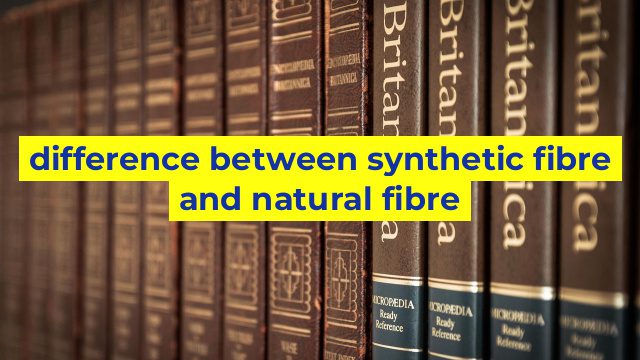Understanding the Key Differences between Synthetic Fibre and Natural Fibre
Fibre materials have come to play an essential role in everyday life. Right from the clothes we wear to the carpet we walk on, and the furniture we sit on, fibres are ubiquitous. But, have you ever wondered about the difference between synthetic fibre and natural fibre? In this article, we will delve deep into their characteristics, pros, and cons.
Natural Fibres
Natural fibres come from natural plant and animal sources, and they have been in use for thousands of years. Examples of natural fibres include cotton, wool, silk, jute, hemp, and linen. Natural fibres have several advantages that make them a popular choice for fabric and textile production. First, natural fibres are biodegradable and do not harm the environment. They are also breathable, soft, and comfortable, making them ideal for clothing. Additionally, natural fibres can regulate body temperature and resist odours.
However, natural fibres have certain limitations. They are prone to shrinkage and stretching, and are less durable compared to synthetic fibres. Also, they may require a higher level of maintenance, including specialized cleaning and proper storage.
Synthetic Fibres
Synthetic fibres are man-made materials manufactured from chemicals such as polyester, nylon, acrylic, and spandex. They were developed in the early 20th century as an alternative to natural fibres. Synthetic fibres have a range of benefits, including durability, affordability, and versatility. They can be produced in various colours, patterns, textures, and densities, making them ideal for a range of products. Additionally, synthetic fibres are less prone to wrinkling and are easy to care for.
However, synthetic fibres have some drawbacks. They are produced from non-renewable resources, and their creation and production contribute to environmental pollution. Additionally, synthetic fibres are non-biodegradable, and they accumulate in landfills, taking years to decompose. Furthermore, synthetic fibres are not as breathable as natural fibres and can cause sweating and discomfort.
Conclusion
Both synthetic fibre and natural fibre have their advantages and limitations. The choice between the two will depend on the specific needs of the user. For instance, natural fibres may be ideal for clothing worn close to the skin, while synthetic fibres may be better for outdoor activities, such as hiking or skiing. Regardless of the choice, it is crucial to consider the environmental impact and the level of comfort and durability to get the best value for your money.
Table difference between synthetic fibre and natural fibre
| Natural Fibres | Synthetic Fibres | |
|---|---|---|
| Definition | Fibres that are derived from plants or animals | Fibres that are made by human beings from chemical substances |
| Examples | Cotton, wool, silk, jute, hemp, sisal | Polyester, nylon, rayon, acrylic, spandex |
| Source | Natural resources | Man-made |
| Production | Harvested, cleaned, and processed to make fibres | Made by combining chemicals under controlled conditions |
| Cost | Generally more expensive than synthetic fibres | Generally less expensive than natural fibres |
| Strength and Durability | Not as strong and durable as synthetic fibres | Strong and durable |
| Comfort and Texture | Comfortable to wear, breathable, and have a natural texture | May be less comfortable to wear and have a synthetic feel |
| Care and Maintenance | May require special care to maintain their natural properties | Easy to care for and maintain their shape and properties |
